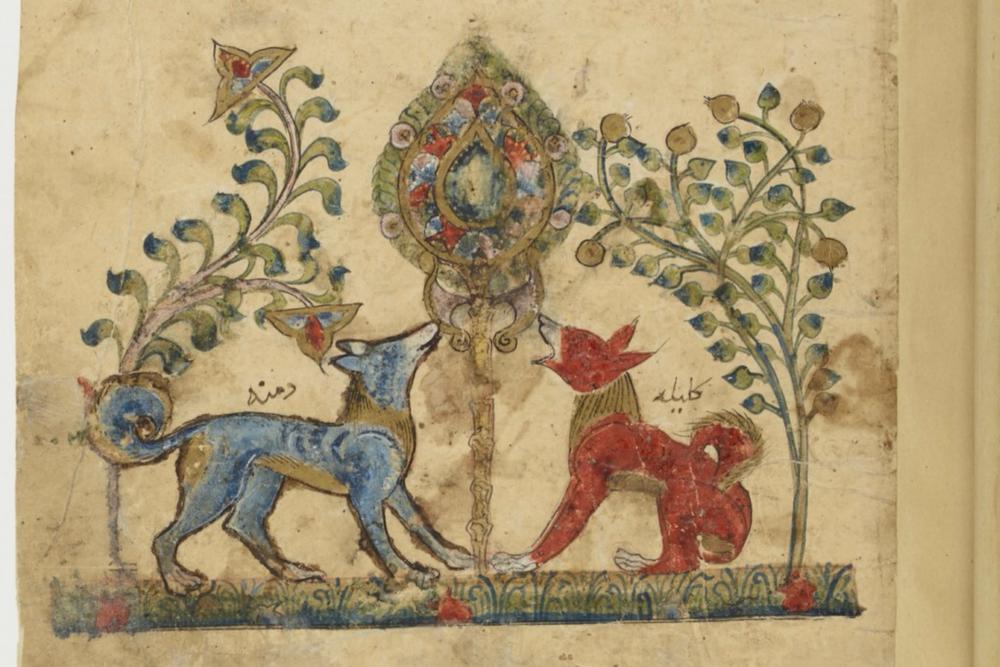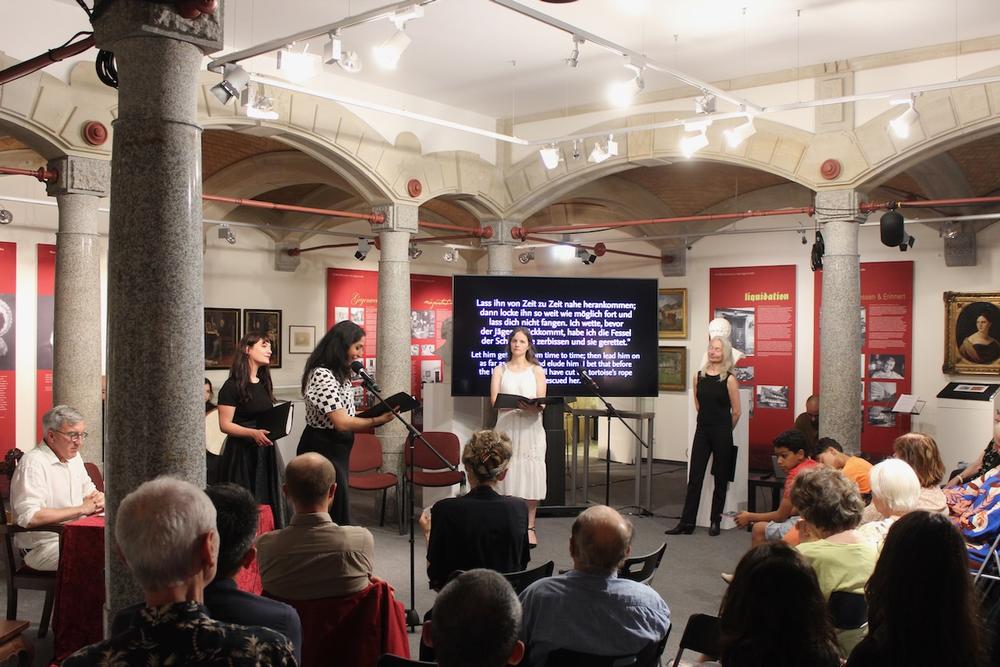Two Jackals Tour the World
Researchers examine the transcultural history of ancient Arabic fables
Jul 21, 2023
The wild dogs Kalīla and Dimna are the main characters in a collection of fables whose origins reach back to 300 CE.
Image Credit: Paris, Bibliothèque nationale de France Ar. 3465, folio 48 recto
For the past 1,700 years, two jackals have been roaming the world. Called Kalīla and Dimna, they traveled from India to Africa via Iran and all the way across Europe to Iceland. They are the main characters in a fable collection of the same name whose origins go back to the year 300 CE.
The stories are based on the poetry of the Panchatantra, a collection of fables with a moral intended to help princes at court learn how a good ruler should behave. In the sixth century a Persian physician translated the texts from Sanskrit into Persian and enriched them with additional content. This was the origin of the stories we know today as Kalīla wa-Dimna.
At that time the two jackals and their stories had traveled about 3,000 kilometers or about 1,865 miles, from present-day India to the region of present-day Iran. In 750 the world tour of Kalīla and Dimna picked up speed again, when the Arab scholar Ibn al-Muqaffa’ translated the Persian version into Arabic. His version is the source of all further translations up until well into the nineteenth century.
According to the American archaeologist James Henry Breasted, Kalīla wa-Dimna, along with the Bible, is the most widely distributed book in the history of literature. Scholars know of translations into forty languages so far. The area of distribution reaches from Malaysia to Scandinavia.
Arabic studies professor Beatrice Gründler at Freie Universität says that Kalīla wa-Dimna is part of the canon of world literature, while noting that research on the collection of stories is still in its infancy. For that reason Gründler and her team are currently working on a critical edition that they plan to make available as a digital multi-text version with editorial comments.
How did the numerous manuscripts come about? Who was involved in the text production? How could the texts spread so far? Over a period of ten years the researchers aim to clarify these questions as part of two projects. The research is being funded with roughly five million euros from the European Research Council and the German Research Foundation, which in 2017 granted Gründler a Leibniz Prize, Germany’s most important research award.
Lessons on Cohesion
What makes the animal fables so significant that they have been passed down over centuries and are now depicted in Arabic-language television cartoons for children? Isla Karademir, a student enrolled in Semitic studies at Freie Universität who is involved in one of the research projects, provides an explanation. She says that the stories in Kalīla wa-Dimna have two functions. On the one hand, the stories provide lessons about friendship, cohesion, and loyalty. These are important ethical and moral concepts that have always concerned humans. On the other hand, the fables are entertaining, and in particular due to the typical presence of animals embodying human characteristics, they are easy to understand. Letting animals speak instead of people is also a good way to criticize those in power.
Performance in Four Languages
In the meantime, the two wild dogs have arrived in the twenty-first century with their stories. They recently made a stop in Berlin, specifically in the Mendelssohn House on Gendarmenmarkt, where the Seminar for Semitic and Arabic Studies at Freie Universität organized an event featuring intercultural dialogue in cooperation with the Mendelssohn Society and the Spanish Embassy in Berlin. Gründler and Karademir, along with Susana Abdulmajid, a student and actress, and Maysoon Shibi, a postdoctoral researcher in Arabic studies, performed an episode from Kalīla wa-Dimna. Alberto Cantera Glera, a professor of Iranian studies at Freie Universität, took on the role of storyteller. The Spanish duo Milo Ke Mandarini provided musical accompaniment.
Performance of an episode from Kalīla wa-Dimna in the Mendelssohn House on Gendarmenmarkt in Berlin.
Image Credit: Assiel Hamdan
The special feature: The performance was presented in four languages into which the collection of fables was translated: Arabic, Hebrew, Castilian, and Classical Syriac. Karademir points out that Kalīla wa-Dimna is a prime example of the cultural exchange across Europe, Africa, and Asia that connects us with one another regardless of what language we speak or what religion we practice. That aspect is also special for Leibniz Prize winner Gründler, who said, “Usually I read the texts quietly to myself. In the performance it was wonderful to hear and enjoy the multilingualism of the work.”
Kalīla and Dimna have long ceased to fascinate people only in the field of literature. Some time ago the Spanish fashion brand Desigual designed a T-Shirt that, according to the company’s website, pictured exotic animals. Gründler says that is not quite correct; the T-shirt actually shows an illustration of a manuscript from the collection of fables. Gründler purchased the T-shirt anyway (or perhaps for that reason). The world tour of the two jackals continues, sometimes even into Berlin’s closets.
This article originally appeared in German in the Tagesspiegel newspaper supplement published by Freie Universität Berlin.
Further Information
Prof. Dr. Dr. h.c. Beatrice Gründler, Arabic Studies, Seminar for Arabic and Semitic Studies, Department of History and Cultural Studies, Freie Universität Berlin, Email: beatrice.gruendler@fu-berlin.de


